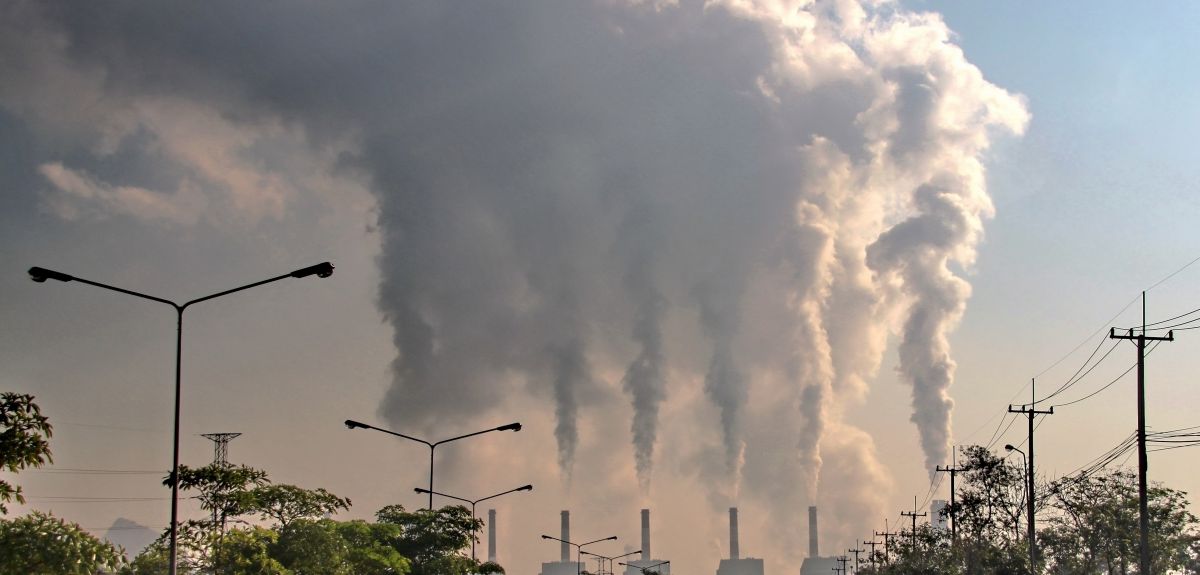
Image credit: Shutterstock
Projections about global emissions cannot accurately factor in economic booms
Researchers have charted the relationship between carbon dioxide emissions from fossil fuels and GDP, known to scientists as global 'emission intensity'.
They have discovered that global emission intensity rose in the first part of the 21st century, despite all major climate projections foreseeing a decline. The working paper by the University of Oxford describes how earlier scenarios (created in 1992 and 2000) were overly optimistic, as recently published observations show global emissions intensity rose, largely due to unexpected economic growth in China, India and Russia. While it is important to note that scenarios were not designed to accurately project individual countries, the authors show that individual countries are the 'bear traps' of global climate scenarios as they can throw projections off course.
The paper by Dr Felix Pretis and Dr Max Roser finds the highest deviations between projections and what actually happened in the observations related to central Africa, where emission intensity rises were vastly underestimated. However, African countries made up only a relatively small share of global GDP and emissions. The main forecast failure on a global scale stemmed from projections about China, where total real GDP growth over the decade was actually around 17%, yet Intergovernmental Panel on Climate Change (IPCC) scenarios undershot this increase by 2-10%. For India, economic growth over the same period was around 10%, with IPCC scenarios showing growth up to 5% lower, and Russia's economic growth was about 6%, around 1.2-3.5% higher than the IPCC scenarios had suggested.
The authors emphasise that IPCC projections, although not forecasts per se, do not appear to be any more prone to error than alternative projections for the same time period. Creating long-term projections in an ever-changing world is challenging, and other big institutions also got it wrong, says the paper.
This study says previous scenarios commissioned by the IPCC about global emissions intensity for the period had suggested emissions would 'decouple' from economic growth and start to reduce. However, after comparing scenarios with actual observations, the researchers find 'global emissions intensity' in the first decade of the 21st century increased by 0.37% and exceeds even the closest scenario growth rate, which projected a decline of -0.1%.
Study co-author Dr Felix Pretis from the Department of Economics, co-director of the Climate Econometrics programme and James Martin Fellow at the Institute for New Economic Thinking at the Oxford Martin School, said: 'Our results find that the unexpected growth in Asia threw the social and economic projections contained in climate scenarios. This shows how unforeseen shifts caused by boom years or climate policy in individual countries can affect the overall global projections and underlines how important the actions of a few countries can be to the overall picture on global emissions intensity.
'The IPCC scenarios assumed that countries would not be as reliant on fossil fuels for their energy as they turned out to be. The belief was also that global GDP and carbon emissions would not rise at the same rate, but for the early part of the 21st century, we see that these scenarios were overly optimistic.'
While it is understood that there will also be some uncertainties around projections of temperature changes based on the physical science in climate models, the paper underlines how over the long term, social and economic shifts are even harder to assess and are highly significant for climate change projections. Unforeseen shifts in individual countries can lead to systematic errors in scenarios at the global level, the paper concludes.
Co-author Dr Max Roser commented: 'The large span of long-run projected temperature changes in climate projections does not predominately originate from uncertainties across climate models. The wide range of different global socio-economic scenarios is what creates the high uncertainty about future climate change.'
The paper raises the question of how scenarios and forecasts should be used to guide policy in the presence of shifts and instabilities. A recent Oxford Martin School policy paper also co-authored by Dr Pretis highlights the importance of accounting for instabilities when forecasting and concludes that the discovery of such forecast failures can help correct projections. His earlier paper goes on to say that in turbulent times, policymakers may even want to switch from scenarios to forecast methods that are robust to sudden changes. This would mean creating climate mitigation goals that are explicitly linked to climate responses (such as observed warming) and cumulative emissions, rather than attempting to track particular emission scenarios.